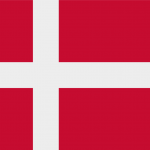Learning Danish, like any journey, begins with the first step. As you know, such clichés won’t do the trick. Any learning requires some level of effort and dedication, but that doesn't mean it has to be tedious or boring.
In fact, with the right approach, you can enjoy every moment of your Danish learning journey, while you reap the fruits of your progress.
If you're reading this, you're already familiar with the English language, and thereby in many ways halfway there! There are, of course, significant differences, but if you have ever considered learning Danish, I strongly recommend you give it a go.
Learning a new language can be a bit of a tall order, of course, but you will be handsomely rewarded.
For that reason, I have written this post to help you get started, and try to answer some of the questions you might have. I will focus more on how you learn, rather than what you learn, yet try to include some examples of both.
This article is primarily meant for newbies, but people with a bit of experience learning Danish will hopefully find it helpful too.
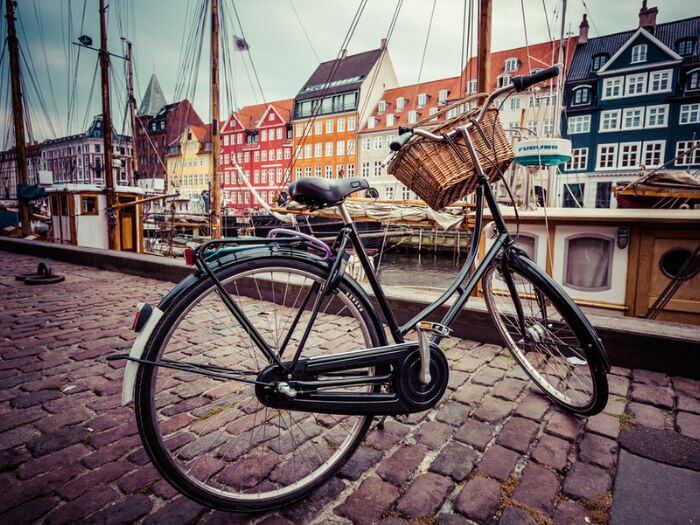
Pro Tip
And by the way, if you’re thinking about learning Danish, then check out my course, Danish Uncovered.
Danish Uncovered is an online Danish course that helps you learn Danish through the powerful StoryLearning® method. I can guarantee you that it’s both fun and effective.
If you’re ready to get started, then click here to find out more and for a free 7-day trial of the course.
Since this post is meant to cover just about everything you need to know as a beginner in Danish, it's rather long. Now, you can read it from start to finish, but you are also very welcome to skip to the part(s) that interest you the most.
I’ve also prepared a special PDF version of the post so you can download it and read it anywhere, anytime.
I have chosen to divide the content into the following sections:
Table of Contents
Why Should I Learn Danish?

Apart from the sheer joyful satisfaction of learning a new language, mastering Danish will bring you a good handful of benefits, that are yours to keep.
Let’s have a look at some of them, in no particular order:
Learning Danish Broadens Your Horizons
One of the most compelling reasons to learn Danish is the opportunity it presents to broaden your horizons.
Language is a gateway into understanding a culture. By learning Danish, you're achieving the tools to explore a rich tapestry of Danish customs, history, and literature.
Reading the Danish classics in the original language, for instance, adds a whole new dimension.
You'll also find that your understanding of the world becomes more nuanced and complex as you delve into Danish traditions and societal uses. This can in turn enrich your worldview and grant you a more global perspective.
Ancient folklore, theoretical physics, arts and crafts, or modern technology and the welfare state, Denmark is a goldmine of inspiration.
Danish Will Aid You On Your Travels
Travelling is always an adventure, but when you know the local language, it becomes a richer, more engaging and meaningful experience.
Being able to speak Danish will let you connect more deeply with locals when you travel in Denmark.
You'll be able to speak to people in cafés and bars, understand menus at restaurants, and find your way around towns and cities with ease.
Your next best friend might even be a Dane, who knows?
The travel experiences that you enjoy will be more authentic, rewarding, and memorable. Also, with Danish you will make yourself understandable in neighbouring countries, like Sweden and Norway.

Knowing Danish Can Open New Career Opportunities
Danish proficiency can be a significant advantage in today's interconnected global economy.
Denmark is a global leader in sectors such as green technology, pharmaceuticals, design, and architecture.
As a result, having Danish skills can open up a world of job opportunities in these fields.
Whether you're looking to work for a multinational corporation with offices in Denmark, or considering moving there to take advantage of the thriving job market, your knowledge of Danish will be a key asset.
Great Exercise For Your Brain
Learning Danish, or any other foreign language, can provide a significant boost to your cognitive skills.
Numerous studies have shown that learning a second language can lead to improvements in areas like memory, multitasking, and problem-solving.
It encourages mental flexibility, enhances your ability to focus and even delays the decline of brain functions in later life.
The plasticity of your brain will truly come into play as you are learning. In this way, learning Danish is not just an investment in a skill, but in your mental health and longevity as well.
Danish Opens New Doors For Studies And Education
In case higher education is in your future, consider the possibilities that Danish proficiency opens up.
Denmark is home to some of the world's top universities, renowned for their high-quality education and innovative research.
Danish universities offer a wide range of English-taught programmes, and exchange students are very much appreciated.
A command of Danish can be beneficial for your daily life, group projects, internships, and can even be a requirement for certain courses.

Danish Is In Many Ways An Easy Language To Learn
If English is a language you're already comfortable with, you'll find that learning Danish is a relatively smooth process.
Both English and Danish share common roots in the Germanic family of languages. This connection means that many of the words, grammar rules, and sentence structures in Danish are similar to those in English.
Coupled with the fact that most Danes are fluent in English and can help you practise, you'll find your Danish proficiency growing steadily and rapidly.
Not Convinced?
Then here’s a summary of what an internet magazine with a different focus had to say.
This smaller country is home to some tall and sexy people. Known for their height, people in Denmark are just all around attractive.
Denmark is known for having some of the most attractive men in the world, so ladies, your next “girls” trip should be there.
Men in Denmark are known to be gentlemen. That in combination with their intense good looks is why we had to include this country.
Denmark is also known to be the happiest country on the planet, maybe that's because everyone you see is so damn sexy, it’s hard to be in a bad mood!
Caroline Wozniacki is one of the best tennis players in the world, as well as being an accomplished model and actress and hails from Odense, Denmark.
Danish ancestry can’t be denied. So, whether you’re into Scarlett Johansson, Viggo Mortensen, or Jessica Alba, a little Danish might go a long way.
The Roots Of Danish And Key Linguistic Features
Let's take a look at the key linguistic features of Danish such as its origins, where its spoken and its linguistic quirks.
You can keep scrolling to read about these features or hit play on the video below to find out all about the Danish language.
The Origins Of Danish
The Danish language, known as dansk in Denmark, is a North Germanic language with historical roots dating back to the Vikings. It has Latin and Germanic roots, as indeed does English.
Linguists often mention the year 1525 as the year when “new Danish” thoroughly replaced “old Danish” as the language spoken there.
This means that the words of the most famous king, Christian the 4th (April 12th 1577 – February 28th 1648) would be comprehensible, save for some obsolete terminology, to the modern Dane.
At least on the occasions when he didn't speak Latin, as was the custom of the upper classes back then. Conjugation, modality and the like were pretty much in place from then on.
Its closest linguistic relatives are Swedish and Norwegian, with which Danish shares a high degree of mutual intelligibility. Albeit, sadly to a lesser extend in recent years, where you can often experience Swedes and Danes switching to English, when speaking together.
However, when pushed, Swedes, Norwegians and Danes do indeed understand one another.
Where Is Danish Spoken?

Primarily spoken in Denmark, there are a few Danish-speaking countries and territories outside of the country.
Danish is also recognised as a minority language in the German state of Schleswig-Holstein.
Outside of Europe, small Danish-speaking communities can be found in the United States, Canada, and Argentina.
Danish also serves as one of the official languages of the Kingdom of Denmark, which includes Greenland and the Faroe Islands, although these territories have their own distinct languages.
Grammatical Gender In Danish
One of the key characteristics of Danish is its use of grammatical gender. The language incorporates two genders: common and neuter, referred to as fælleskøn and intetkøn, respectively.
Nouns are assigned to these genders, which influences the form of associated words such as adjectives, articles and demonstratives. For an English speaker, this might seem a pain, but don’t get too worried.
Here's how it works: ”a whale” is en hval (common gender), whereas ”a house” is et hus (neuter). How can you tell which gender a noun is? Impossible, I’m afraid.
There's no way to know, unless you know it, not even a useful, easy rule of thumb. Danes tend to learn it by heart. As a learner, if you apply the StoryLearning method, you'll pick up the genders naturally as you immerse yourself in Danish by reading.
Don’t sweat the genders though, you'll be understood perfectly even if you choose the wrong one. Parts of Jutland have even completely abandoned the use of neuter, like the Aarhus area.
Oh, and one rule of thumb though: about 75% of nouns are common gender, so if you have to guess…
The Danish Alphabet And Pronunciation
The Danish alphabet is essentially the same as most other Latin alphabets, consisting of the basic twenty-six letters of the Latin script plus three additional vowels: Æ, Ø, and Å.
Danish pronunciation is known for its distinct features, including the stød, a kind of laryngeal phonation similar to a creaky voice or a glottal stop.
If you're a British English speaker, you'll be familiar with glottal stops as they often replace the ‘t' in words like “butter” or “bottle”.
Danish is also made up of a large vowel inventory with around 27 different vowel sounds.

The Influence Of English
While the Danish language has evolved over centuries, it continues to be influenced by other languages.
English, in particular, has had a significant impact on Danish vocabulary, especially in areas such as technology, culture, and commerce.
Nevertheless, Danish remains a vibrant language that is a testament to Denmark's rich history and culture.
In language learning, Danish is often considered mildly difficult for English speakers to master, primarily due to its complex pronunciation and unique grammatical structures.
However, by immersing yourself in the language and culture, it is certainly possible to become fluent in Danish, especially if you follow the rules of StoryLearning.
What Do I Need To Know About Danish Culture?
Danish culture is quite a blend of historic traditions and progressive ideals. A deep-rooted respect for individual freedom, equality, and a high level of trust in each other and the system, are all hallmarks of Danish society.
It's common for managing directors of companies to have lunch with the cleaning crew, in order to keep in touch with all levels of the business.
Speaking of business, there is a certain shrewd irony to the fact that not many years ago, the main Danish export goods were bacon, butter and cookies. Today it's medicine for weight loss.
It says a great deal, that Denmark was the first country in the world to legalise pornography, in 1969, and, some 20 years later, the first country in the world to accept same-sex marriages (not that the two things have anything in common). Most Danes take much pride in this liberal approach to life.
Hygge

The Danes have a fondness for hygge (pronounced hyi-gah), a concept embodying coziness, contentment, wellbeing, and the absence of anything unpleasant.
Reflecting the Danish love for simplicity and modest pleasures, hygge is about creating a warm atmosphere and enjoying the good things in life with good people.
You will often find Danes engaging in leisurely activities such as reading, cooking, or sharing a meal with family and friends to achieve this sense of hygge.
Etiquette And Communication Style
In terms of etiquette, punctuality is extremely important to the Danes. They appreciate direct communication and honesty, but in a polite and modest manner.
It's not uncommon for business and social conversations to be straightforward and concise. At the same time, Danish affinity for social equality makes it a common sight to see the CEO eating lunch with the cleaning staff.
The Danish communication style often leaves little room for misunderstanding, which helps maintain a sense of peace and order.
Danish Environment Consciousness
Danes are also known for their environmental consciousness. Copenhagen, the capital, is often hailed as one of the world's most sustainable cities, with a large portion of the population commuting by bicycle.
There's a strong emphasis on recycling and sustainable living, reflecting the close connection Danes have with nature.
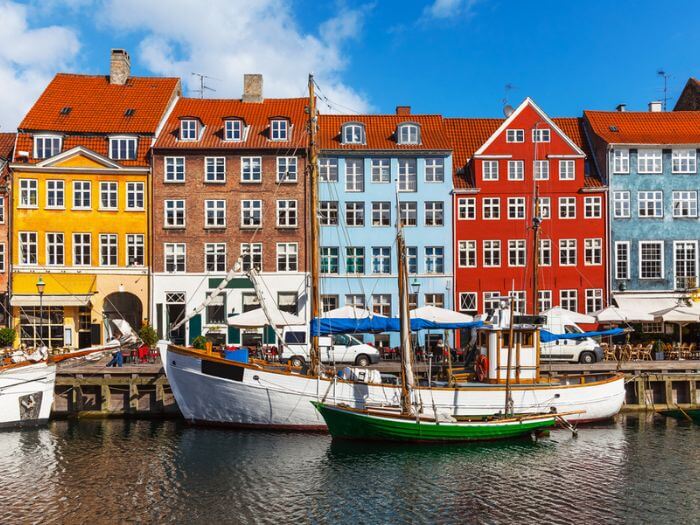
Danish Social Gatherings
At social gatherings, Danish customs might seem informal to outsiders. It's common for guests to bring gaver (gifts) such as flowers or wine for the host.
When dining, some may wait for the host to propose a toast before drinking, and it's customary to maintain eye contact while toasting.
This again leads to another point; Danes are generally very fond of drinking. Having a few beers, or glasses of wine together is seen as a mark of friendship.
Or even as a remedy against hardships as in ”after a few beers, we saw eye-to-eye, problem solved.” This leads to the Danes’ favourite situation, which is agreement and compromise.
In fact, drinking is so closely integrated into Danish social life, that non-drinkers sometimes feel labelled either ”recovering alcoholics” or ”self-righteous”, if they don't partake in the binge drinking of Danish get-togethers. Fortunately, this attitude seems to be changing in recent years.
Danish National Pride
The Danes also have a strong sense of national pride and have a deep appreciation for their heritage.
They've preserved their history well, with numerous historical landmarks, museums, and cultural festivals that celebrate their Viking roots and royal heritage.
In all, Danish culture is a unique mix of societal respect, environmental awareness, and a love for simplicity and coziness. As you navigate this diverse and intriguing culture, keep these aspects in mind, and you'll feel right at home.
Is Danish Hard To Learn?

Is Danish hard to learn? In short, of course not. For starters, Danish shares the same Germanic root as English, which can make the learning process somewhat easier.
The Danish language has many loanwords from English and shares numerous cognates. This lexical similarity can significantly boost an English speaker's comprehension and vocabulary building.
Here are some examples of cognates:
”Museum” in English, is museum in Danish, “a glass” is a glas, “a cat” a kat, ”an oven” an ovn, ”a ship” is skib, and so on. The same goes for several adjectives; ”clear” is klar, ”open” is åben and ”low” is lav.
The common roots show up in many places, and it will help you, even if the pronunciation is a bit different. Sometimes things really are as easy as they seem.
Add to that, the similar sentence structure of English and Danish, and you’ll see that you have an outstanding starting point for learning this language.
In terms of grammar, you'll find that Danish is relatively more straightforward than other languages.
There are no verb conjugations related to person or number, and there is no need to worry about gender when using most nouns (75%). This simplicity reduces the complexity typically associated with learning a new language.
Additionally, Danish culture's embrace of English movies, music, and literature without translation or dubbing provides an immersive environment for English speakers. The widespread use of English in Danish society, especially among the younger generation, helps to facilitate communication and learning.
What Makes Danish Tricky
However, the process is not without its challenges. One of the most daunting aspects of Danish is its pronunciation. Danish has numerous vowel sounds that don't exist in English, and its ‘soft d’ and stød (glottal stop) are notoriously difficult for English speakers.
Another challenge is the discrepancy between written and spoken Danish. While the written language closely resembles other Scandinavian languages, the spoken language is quite different, making it difficult for learners to understand spoken Danish, even if they can read it well.
Danes tend to be sloppy with their spoken language, so that word endings are omitted, vowels ”swallowed” and the like. This is not unique to Danish, but it does make it harder to comprehend.
Lastly, Danish grammar, while simpler than many other languages, has its unique complexities.
There are many exceptions to the general rules, the use of enclitic definite articles (this involves adding the Danish words for “the” to the ends of nouns), and a number system that is partly based on the base-20, making it quite distinctive from the English base-10 system.
So Is It Hard?
To sum up, learning Danish as an English speaker presents a mixed bag of much ease and some challenges. The shared Germanic root, lexical similarities, and straightforward grammar can ease the process.
At the same time, the unique pronunciation, the difference between written and spoken language, and the unique aspects of Danish grammar may present some challenges.
Nonetheless, with patience, practice, and immersion, English speakers can successfully learn Danish. And remember, you don’t really need to aim for perfection in your pronunciation. It's not expected of non-natives, and your accent is most likely to be considered charming. Speaking of which…
Want to download a PDF of this article to read later? Click here to get your FREE copy.
How Can I Get To Grips With Danish Pronunciation?

As I've already mentioned, Danish pronunciation has a bit of a reputation. But the most important point here is to listen to spoken Danish, any way you can. A great way to do this is to listen to and read short stories in Danish at the same time.
In the meantime, I’d like to suggest a few things that the avid listener could pay closer attention to, which I think would help along the way:
The Stød
The stød, the previously mentioned glottal stop-like effect, is a distinctive feature of the Danish language. This particular sound can differentiate the meanings of words that are otherwise spelled the same.
For instance, the word mor means ”mother” when pronounced without the stød. However, when articulated with the stød, mord, it translates to ”murder”, which is hopefully a very different thing!
This linguistic particularity can be very difficult indeed, for non-natives. For example får can mean either ”sheep” or ”gains”. These two meanings are separated by a very small, delicate, glottal stop, yet easily identified by native speakers.
For most new learners, the two versions will sound exactly the same, and be really hard to pronounce in two ways. The good news is that context is your friend. It'll make the meaning obvious in most cases, and save you from any misunderstandings.
Danish Sounds
Pronunciation in Danish can be challenging for non-native speakers due to the presence of several unique sounds and phonetic rules that don't exist in many other languages.
Understanding and pronouncing Danish correctly is crucial for effective communication. However, perfecting these sounds is not necessary in order for you to be understood.
Basically, you should celebrate every time you get the pronunciation of them right, and certainly not let them stop you from giving it a try. Like with any language, the key to fluency lies in regular practice and immersion in Danish.

Danish Vowel Sounds
One of the unique features of Danish pronunciation is the wide range of vowel sounds, some of which are not found in English. In Danish, each vowel exhibits a long and a short version.
The distinction between these versions can be subtle and nuanced, often leading to different meanings for the same word.
For example, the noun hoved means “head” when the ‘o' is short, but when pronounced with a long ‘o', hoved implies the prefix “main-“, not unlike the English ”head-”.
The Soft D
In Danish, the blød is a unique sound that doesn't have an equivalent in English. The soft D sound often appears in common words such as brød, which means “bread”.
In this case, the D is pronounced very similar to the English ‘th' in words like in “there”. Don't get too caught up in this, though. Anybody with any willingness will understand, and in time you'll get closer to the correct pronunciation.
So, if you pronounce the D in common words like gade (street) or måde (way – of doings things) like the English ‘th', you are as close as anyone could expect.
Silent Letters In Danish
Much like English and plenty of other languages, silent letters are common in Danish, particularly at the end of words.
For instance, the word find is pronounced ”fin”, with the ”d” being silent. This silent letter rule often presents a significant hurdle for learners. However, it should be mentioned that this concept is less prevalent in Danish than in, say, French.
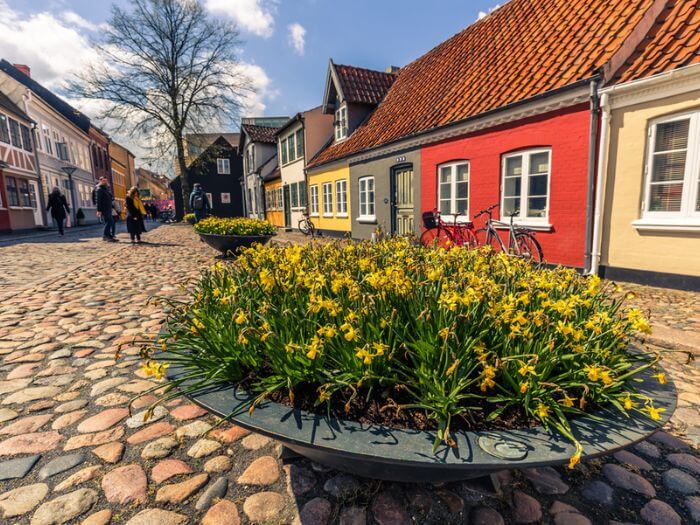
How To Master Danish Pronunciation
As with any language, regular practice is pivotal in mastering Danish.
It follows, that going to Denmark works like dynamite; you are forced to use the language, intimidating as it may sound. Although it's not the only way to immerse yourself in Danish.
Don't let the Danes coax you into speaking English! Since the Danes consider themselves masters of English, they will quickly tend to switch to that, whenever they sense that a speaker is non-native.
Immersion techniques that you can implement from home, such as listening to Danish podcasts or watching award winning Danish TV shows (such as ”Borgen”), can provide you with an authentic and useful language experience.
Oh, and I feel I have to mention this. Sooner or later, make no mistake, some joker will ask you to say Rød grød med fløde – (red porridge with cream).
It's virtually impossible for non-natives to say this sentence, as it's made up of ”ø”, glottal stops, and consonants that are hard for learners to pronounce.
Asked to do this, you may humour this person, or flatly refuse. Some Danes still find it the most hilarious thing in the world. My Danish friends find it tiresome. You have been warned!
Are There Any Pitfalls I Should Avoid When I Start Learning Danish?
Obviously, the route you take is entirely for you to decide. You can go about learning Danish any way you wish, and walk the path you feel works best for you.
However, experience shows that certain methods, goals, or practices often turn out less effective, if not decidedly counterproductive, to your brave and noble endeavours.
In the following, I’d like to point out a few of those:
Don't Expect Perfection Within A Month, Or Ever

It’s not gonna happen. Be reasonable with yourself. If that was even remotely possible, you could speak to the world in their mother tongue within a few years.
Instead, you should enjoy and celebrate every time you successfully get a message across, in a language that was recently a completely strange land to you.
Perfect, elaborate and blossoming Danish is reserved for a precious few, who happened to be brought up with it, cursed or blessed as they may be.
Set a reasonable goal, like naming the ingredients and processes of a dinner you are making. That will impress anyone, and you’ll know you’ve come a long way.
Especially if that dinner is roasted pork chops with potatoes and parsley sauce, which just happens to be the official Danish national dish.
Don't Translate Or Overdo Notes
Both will tend to steer your focus away from the absorption, or even feel, of the language. The best thing, in my experience, is to let it come to you more naturally.
Be attentive, of course, and note pronunciation and syntax, but a very theoretical approach might lead to theory alone.
I mean, look at how a baby learns a language, any language. The baby doesn’t take notes, or analyse grammar, it just listens attentively. It tries to copy what it hears, and in time masters the pronunciation, syntax and grammar.
It can be tempting to write down any expression you hear and would like to remember, and it can be a good idea. But in general, I would recommend you let it come to you naturally, as it will once you’ve heard a line often enough.
This is actually how the StoryLearning method works!
Likewise, translating might not always work in your favour. Even though it sounds like an obvious way to go about it, it is likely to keep you stuck in useless word comparisons, and trying to make one language match another.
To some extent, translating is at the heart of learning a new language, but don't treat it as a written assignment.
Avoid Isolating Yourself

I will admit that I, myself, can tend to be a bit of a loner. Especially when having to enter a field that is totally new territory to me. I’d like to master things, before I show it publicly.
In case you are anything like me, you should know that there is plenty to be gained from breaking out of that cage, especially when learning a new language.
Of course, you may sit in solitude and go through pages of grammar books, dictionaries or audio exercises. But nothing beats the interaction with other living beings. I promise, it won’t hurt, despite what the fear villain might say.
When faced with other people, your brain will be pushed into finding solutions. It will search for ways to communicate whatever you’re trying to get across.
Note, however, that Danes can be a special challenge in this respect. Since most Danes consider themselves experts of the English language, they will switch to that at any given opportunity.
I know several people who were exchange students in Denmark who had to insist on being spoken to in Danish. You may have to insist like they did, it's not at all rude.
What’s The Best Way To Become Fluent In Danish?
I would love to say: immerse yourself in it, and it will come. But in the event you’d like a more systematic, known-to-work method, I have a few suggestions that will be useful.
Luckily, you are not the only one to want that, and some truly great people and ideas are here to help you.
Let’s have a look:
Enrol In A Course, Like Danish Uncovered To Learn The Fundamentals (And More!).

With Danish Uncovered you get to have loads of fun while getting to grips with this foreign language. It’s designed to take you by the hand as a new learner of Danish, and keep you interested and challenged throughout your entire learning experience.
The concept is that learning should not be a tiresome and tedious experience, but rather an exciting process that will keep you going. Even if you have no Danish experience at all, Danish Uncovered won’t make you feel left to your own devices.
The course is based around a captivating story in Danish, written especially for beginners. This course will keep you on edge, with plenty of twists, turns and cliffhangers, while you steadily learn to master a new language.
Set Reasonable Short And Long-Term Goals
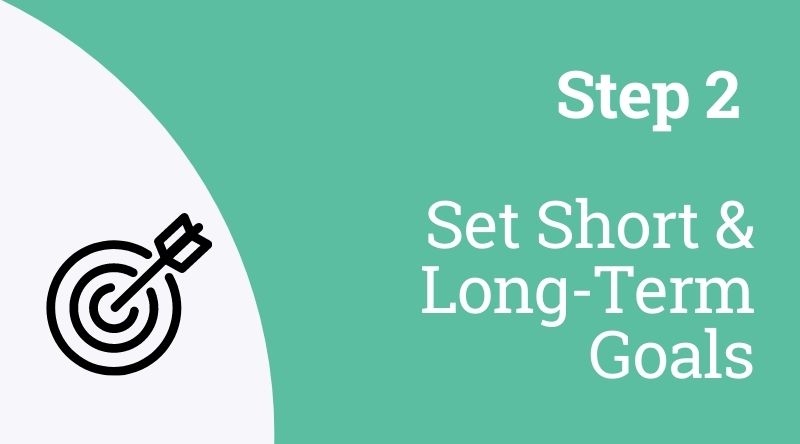
Rome wasn’t build, nor brewed, in a day. Take it easy and try to have a relaxed approach to the new language. A great idea is to set short-term goals, like going to the baker’s and ordering your favourite bread in the morning.
After that, you can add more goods to your repertoire, and perhaps even tell her/him that the prices are too stiff! It may sound like nothing, but it will very quickly make you take giant leaps forward.
The long-term goals can be a little more tricky, as they are really a question of how fast and far you wish to move.
A good idea, though, is to make them challenging, but not too difficult. You could take point of departure in one of your interests. You may say to yourself – I want to be able to express in Danish:
- Why is The Texas Chain Massacre such a great movie?
- How can it be, that Wagner’s music is better than it sounds?
- Why is Moby Dick possibly the best novel ever written?
- If I have no free will, how can I be morally culpable?
- How come anyone on earth can find raw fish delicious?
And I’m sorry if I gave myself and my preferences away there, but as you see, these can be altered to suit your own personal taste, and involve any area of life that excites you.
The point being, once you find a subject that interests you, your brain will work hard to find an expression for that feeling. Truly a sublime exercise.
Learn Danish Phrases

Don't write these Danish phrases down, just hear and use them. It's such a quick and sure-fire way to get into a new language. Having memorised just a few will boost your confidence no end, and prepare you for further endeavours.
It's far more effective than memorising random words, or getting lost in lists of fruits or beetles, that you will seldom use.
Phrases that are often used will make it much easier for you to strike up conversations with Danes, and soon you can take your new language to the next level.
Did you notice Peter went all cucumber last night?
Phrases, expressions and idioms in another language can be fun. Like gå agurk, literally ”go cucumber”, in Danish means to go bananas. And Danish is full to the brim with such expressions, so I am just going to name a few:
- Spis lige brød til – ”Eat bread with that” – take it easy, don’t get too upset/excited
- Håret i postkassen – ”Hair in the mailbox” – put in a difficult, sticky situation
- Der er ingen ko på isen – ”Their is no cow on the ice” – there is no real problem
- At spille Kong Gulerod – ”To act King Carrot” – to behave in an arrogant manner.
- Ikke den skarpeste kniv i skuffen – ”Not the sharpest knife in the drawer” – derogatory for someone you don't find too clever.
That last one has endless possibilities, like ”Not the coldest beer in the box”, ”Not the fastest animal in the forest”, ”Not the most yellow corn in the can”, ”Not the most drunken Swede in Copenhagen”, and so on and so forth.
Continuing the list can be great fun!
Oh, and if you’re broke, you ”don’t own a red shrimp” – Ejer ikke en rød reje .
Don’t Get Hung Up On Grammar Or Perfection
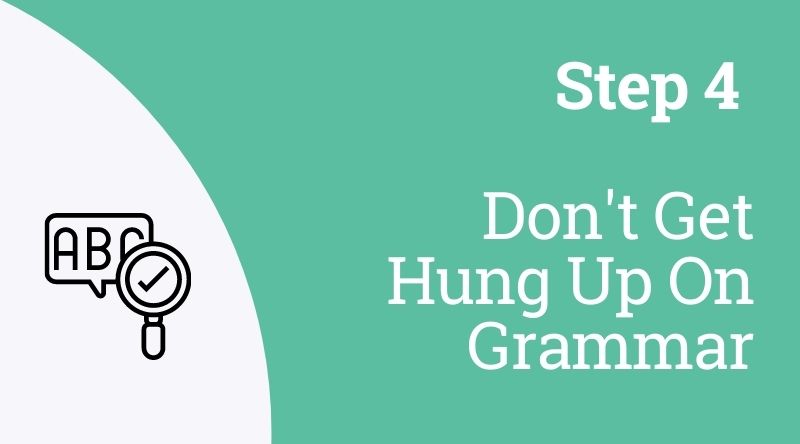
And don’t be afraid to make mistakes, in general. They are bound to happen, and are an integral part of a sound learning process.
You may happen to say something that sounds hilarious to Danes. When that happens, it's really not a big deal.
If people laugh, they laugh at the funny thing you said, not because you’re a silly person. These occasions may even be the most memorable parts of your Danish learning process. Our mistakes are often the things we learn the most from.
At the same time, too much focus on grammar and on being correct can be very counterproductive to your progress. It can stop you from joining conversations that could be extremely fruitful for you.
So by all means, go ahead and talk, imperfect as it may be, it's the best and most enjoyable way to move forward. Which leads us directly to the next point:
Find Danish People To Speak To
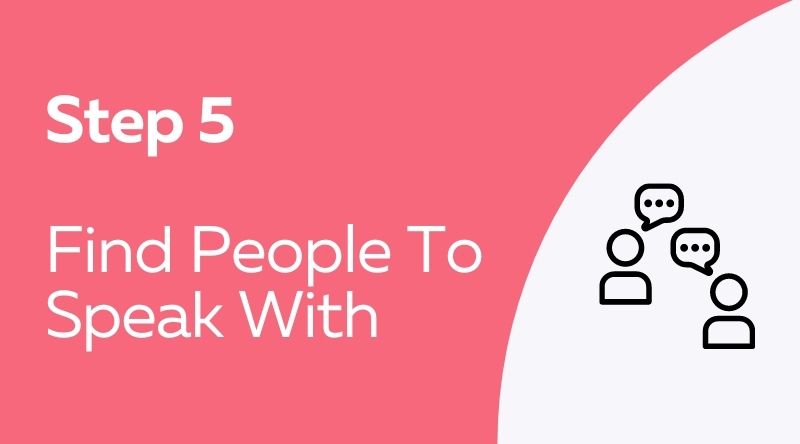
And, by all means, as many as you can. I’m perfectly aware that Danes have a reputation for being a bit reserved, socially. Some even have the audacity to accuse Danish people of being standoffish.
But I know for a fact that Danes are as willing and eager to speak to people from different places in the world, as any other population is. You could in fact say, as a historically seafaring nation, speaking with strangers in imprinted in our DNA.
It would be ideal if you could find actual Danish people in the flesh, to speak with. Talking face to face gives you a unique sense of not only pronunciation, but also the rhythm and tone of the language.
However, since Danes are an exclusive little club, I know you won't necessarily find one on every other street corner.
If you're not in luck, you can try what modern people do; search online. You can then choose to be perfectly upfront. Announcing that you are learning Danish and seeking Danish people to speak with is perfectly fair.
Or you can use your interests or hobbies as a point of departure. You can meet Danes on internet forums focusing on chess, death metal, Japanese literature, or any other interest you may have.
Want to download a PDF of this article to read later? Click here to get your FREE copy.
What Are The Best Resources For Learning Danish, Online And IRL?
Learn Danish Online

I have previously, for good reason, mentioned the course Danish Uncovered. Through intriguing stories, enrolling in this course will get you a long way towards your goal. Learning a new language doesn’t have to be boring, and this course is living proof.
Danish Books
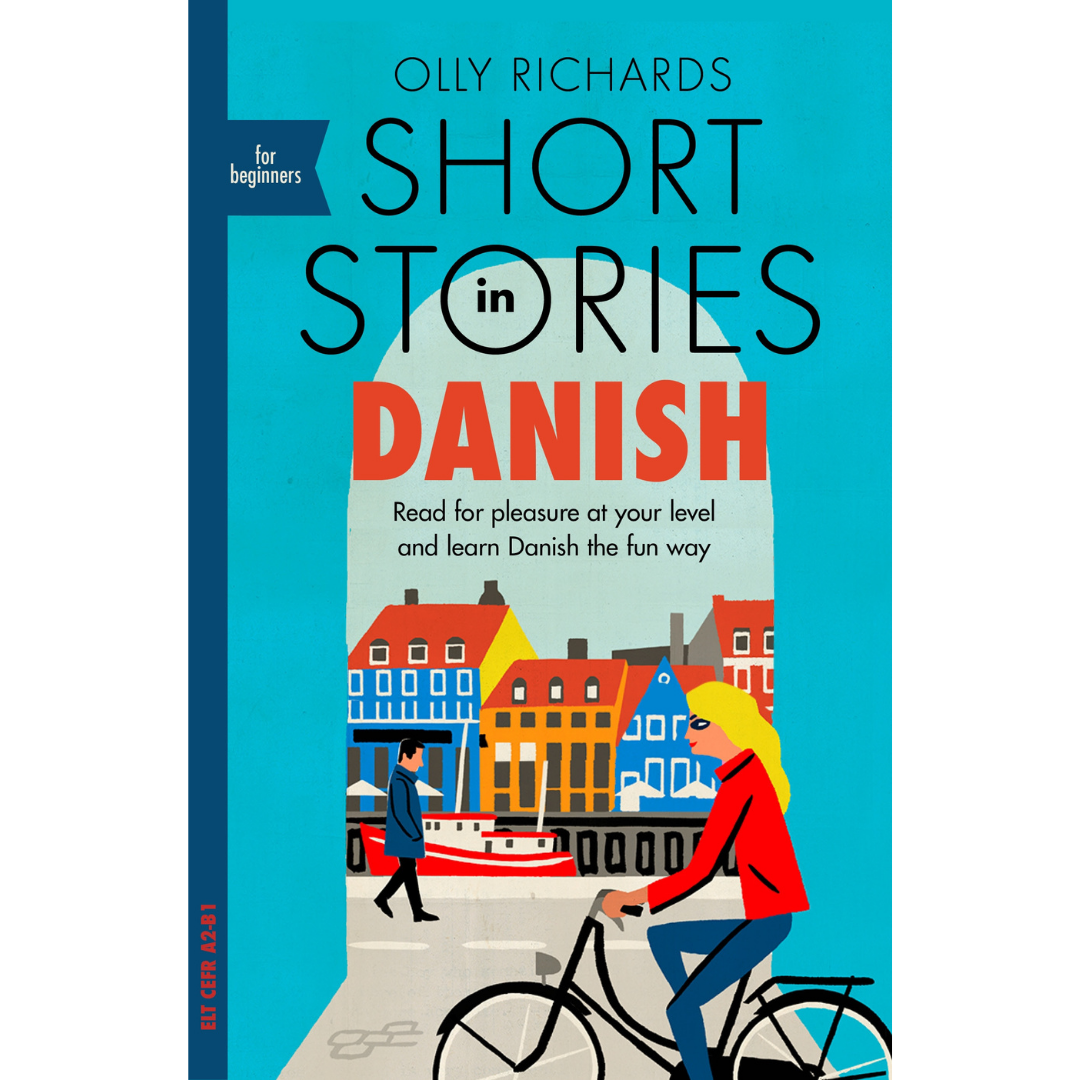
Reading, aside from being utterly beneficial for your brain and mental well-being, is a wonderful way to enhance your language skills. Sitting down comfortably immersed in a good book is often the best place to be. That's why I recommend ”Short Stories in Danish for Beginners”. Incorporating insights from neuroscience and cognitive psychology, this book uses captivating short stories, suited for both beginners and low-intermediate learners.
Once you have read that, and are still eager to learn even more, you will be able to find multiple books for Danish learners. This is true whether your main interest is reading stories, or going into the more theoretical fields, like syntax, grammar and phonetics.
Danish Online Content
Denmark is one of the most digitalized countries on the face of the earth, so it’s really no wonder that the internet is abound with Danish content, including for learners of Danish.
A quick search on YouTube will convince you of this. Since these are open platforms, the quality is bound to vary greatly. But it may be worth your while to have a look around, to see if something catches your attention. After all, it can’t do any harm.
Danish Podcasts
Another possibility is to search out Danish podcasts. You can easily find Danish podcasts of a reasonable quality, covering just about any topic that tickles your fancy.
This is probably not very suited for the absolute beginners. But once you’ve reached a low-intermediate level, there is much to be gained here.
Don’t worry if you don’t understand all that’s being said, you are bound to pick up words, phrases and pronunciation anyway.
Danish Television

In case you prefer the aid of things like subtitles and a visual back drop, that is also available at your fingertips.
In recent years, Danish television series have experienced a huge boost in popularity in most parts of the world. They're packed with a sort of ambience, that keeps the audience intrigued.
As part of the hyped ”Nordic Noir” concept, series like ”The Bridge”, ”Borgen”, ”Those who Kill”, and ”The Chestnut Man” all boast massive critical acclaim, and may well be worth your while.
Now You're Ready To Start Learning Danish

With this, it's my humble hope that you have become wiser as regards the challenges of learning Danish. Even more, I hope you feel motivated to learn this peculiar, weird, yet wonderful language.
Don't start with Søren Kierkegaard (though even people from Japan learn Danish just to read his original texts). Not only is his language old-fashioned, it is also incredibly elaborate, difficult, complex, and stylistically unequalled.
It's my wish to have shown that much less will do. Have fun with it, talk to Danes (they’re incredibly friendly), listen, learn, speak, and open your mind to a whole new world of Nordic history, culture and heritage. There is very little risk that you will ever regret it.
I hope you’ve found this post useful!
If you have any friends or family learning Danish, please take a moment to share this post with them, or on social media – it would mean a lot to me!
I know this is a long post and it’s difficult to take everything in all at once. That’s why I’ve created a special PDF version of this article which you can download and refer to any time you need it! Click here to download the PDF version for free. And if you download the PDF, I’ll send you even more tips to help you as you continue learning Danish.
